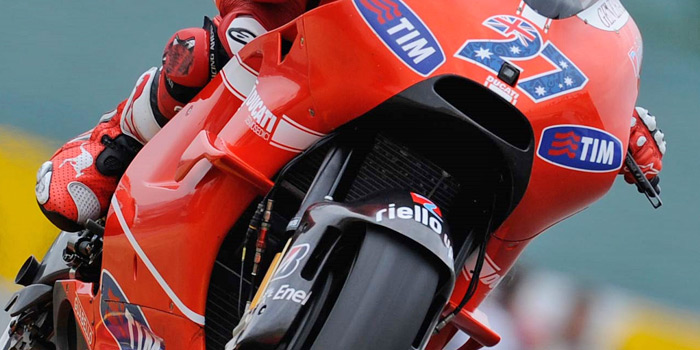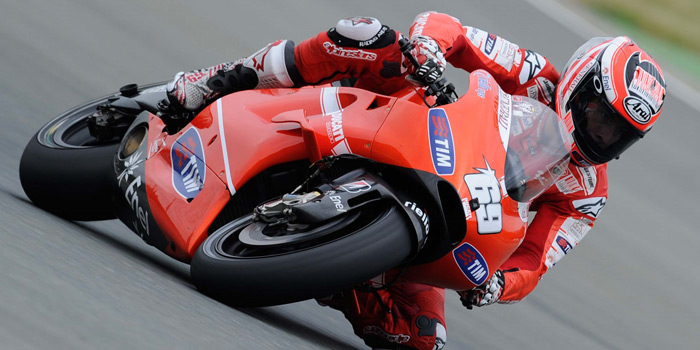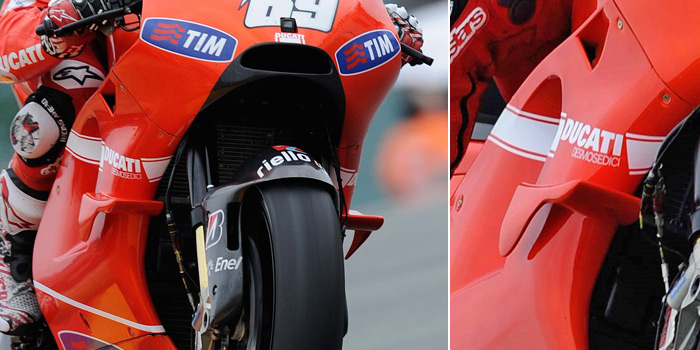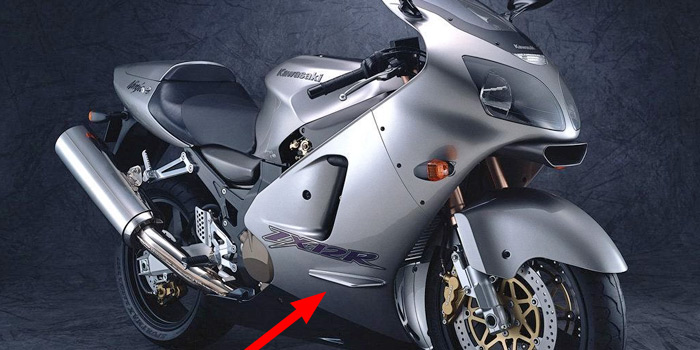
This weekend on the MotoGP race in Sachsenring Germany the always-innovative Ducati Corse team is racing the Ducati GP10 with a new fairing. As you can see from the photos the big difference are the two small winglets just behind the front wheel. According to Ducati the small wings on the Desmosedici GP10 fairing "help prevent wheelies around the dramatic undulations of this circuit". But how exactly do they function? Read below for a small analysis.---

Unlike most race cars and many road cars, motorbikes almost never use any aerodynamic downforce. Their shape is aerodynamically optimized (or not) for low drag, stability, cooling efficiency and rider comfort. It could be possible to have some kind of inverted wing or a similarly acting shape but the vector of the downforce would always be in the plane of the bike. When the bike lean the horizontal component of the downforce will act as additional lateral load to the tires spoiling grip and offsetting whatever benefits in a straight line. Movable and tiltable wings or other aerodynamic devices are too complicated and mostly inefficient.
Even so these winglets are too small to produce any sufficient downforce.

So if not producing vertical force how do these small winglets help the bike to cope with an uneven track and reduce the lost time spent on wheeling? The answer should lie in the very unfavorable aerodynamic behavior of a rotating wheel. The front wheel of the bike produces a lot of turbulence and its wake is disturbing the airflow around the bike/rider. When the tarmac is bumpy and even worse when the bike lifts the front wheel the turbulence become very unstable and the wake of the front wheel disturbs the airflow.
The small wings with their almost vertically canted edges act like barge boards that restraint the wake of the front wheel and help stabilize the airflow even when the front wheel moves abruptly.
This behavior could be part of a dynamic loop where the stabilizing behavior of the winglets prevents destabilizing the front wheel thus indirectly preventing wheelies.

A very similar approach was followed from Kawasaki almost 10 years ago with the ZX-12R, then the fastest production bike with a top speed higher than 300km/h. There are two small wings each side of the fairing without any obvious angle of attack or camber. Their effect should be similar, they are barge boards that limit the wake of the front wheel and stabilize the bike. There are also small protrusions just above the wheel spindle that could possibly act as vortex generators.
It is worth noticing that despite their power these two bikes are quite narrow for their kind, because they both use monocoque frames (cfrp in the Ducati, aluminum in Kawasaki) that are placed above and not beside the engine. The position of the winglets is also quite similar, they are just above the plane of the wheel centers.
(photos: Ducati Corse, Kawasaki)
